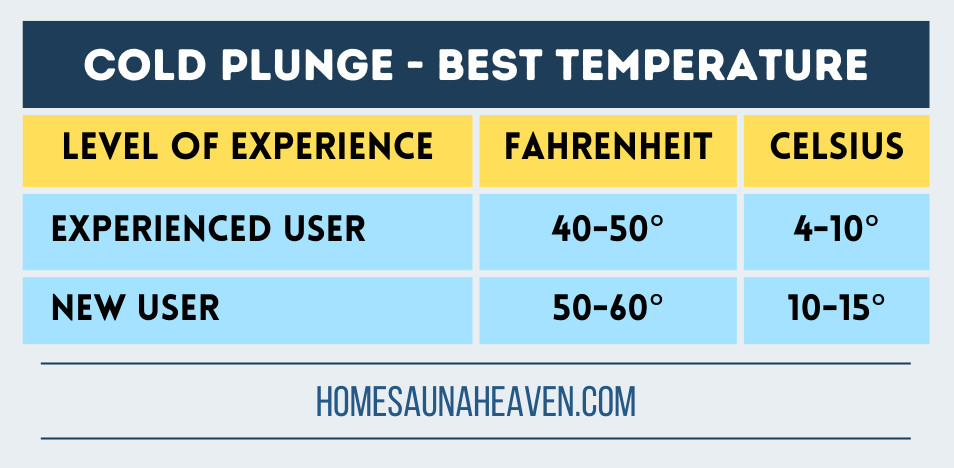How Cold Should a Cold Plunge Be?
Cold plunge therapy can be a powerful tool for enhancing physical and mental well-being when done correctly.
Cold plunge therapy can be a powerful tool for enhancing physical and mental well-being when done correctly.

The practice of cold plunging has gained popularity as a wellness trend over recent years, with enthusiasts touting its numerous health benefits.
From athletes to everyday wellness advocates, the cold plunge has become a staple for many seeking to enhance their physical and mental well-being.
However, a critical question often arises for those interested in this practice: "How cold should a cold plunge be?"
This question is pivotal as the temperature can significantly impact the effectiveness and safety of the experience.

Before diving into the specifics of the ideal temperature, it's essential to understand what cold plunge therapy is and why it's beneficial.
Cold plunge therapy, also known as cold water immersion or cryotherapy, involves immersing the body in cold water for a short period. This practice is believed to offer numerous health benefits, such as reducing inflammation, improving circulation, boosting the immune system, and aiding in muscle recovery.
The body's response to cold water immersion involves several physiological processes. When you enter cold water, the body's initial reaction is to preserve core temperature. Blood vessels constrict, redirecting blood flow from the extremities to vital organs. This response can enhance circulation once you're out of the cold and blood vessels dilate again.
Additionally, cold exposure is believed to activate the sympathetic nervous system, releasing adrenaline and endorphins, which can lead to feelings of invigoration and pain relief.

Now that we have a basic understanding of cold plunge therapy, let's explore the ideal temperature range for a cold plunge.
The recommended temperature for a cold plunge typically ranges from 50°F to 59°F (10°C to 15°C). Within this range, the body can experience the benefits of cold exposure without significant risk of hypothermia or shock, especially for beginners.
Professional athletes often use colder temperatures, sometimes as low as 45°F (7°C), for shorter durations to aid in rapid recovery. However, this is usually done under professional supervision.


Alternating between cold and heat exposure, such as using a sauna before a cold plunge, can enhance the benefits of both therapies.
Regular cold plunging can lead to better acclimatization and greater long-term benefits.
Using cold plunge therapy after workouts can aid in muscle recovery and reduce soreness.


The ideal temperature for a cold plunge typically ranges from 50°F to 59°F (10°C to 15°C), but it's essential to personalize the experience based on individual tolerance and safety considerations.
Remember, the key to effective cold plunge therapy is consistency, gradual adaptation, and mindfulness of your body's responses.
As always, consult with a healthcare professional before beginning any new wellness regimen, especially if you have pre-existing health conditions. Happy plunging!
Your cart is currently empty.
Start Shopping